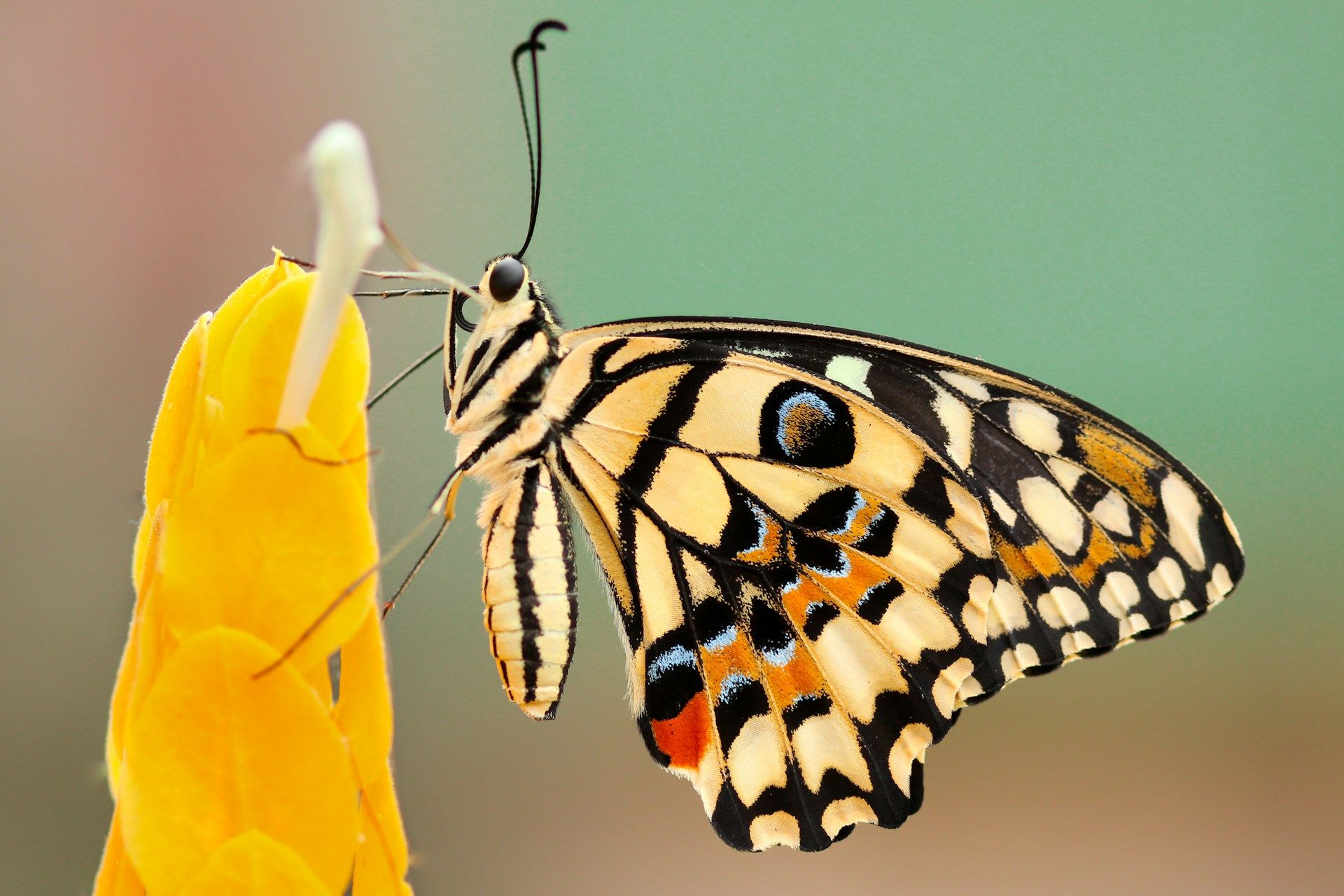One of the most beautiful insects in the world is butterflies, covered in vibrant markings and populating our flower gardens during the summer. There are between 17,500 and 19,500 species across the Earth, with around 750 of them in the United States. While we see them most prominently during the summer months, there might be lingering thoughts on how long do butterflies live, and whether it depends on the species. Continue reading to learn how long butterflies live and what environmental factors affect their life cycles.
RELATED: What Is the Strongest Animal Ever?
How Long Do Butterflies Live?
There is a range of how long butterflies live, as different species adapt to the world in different ways. For instance, some small species live no longer than a week while the longest-lived butterflies can live up to a year. These lifespans differ because of not only their species type but also environmental factors around them.
What is the Average Lifespan of a Butterfly?
For the majority of butterfly species, they have a lifespan of two to four weeks. This of course does not apply to every butterfly, as the Monarch butterfly has a lifespan between two to six weeks while the Lime Swallowtail butterfly only lives between four to seven days.
These periods only include the last stage of their lifecycle though; the adult or reproductive stage. The other three stages (egg, caterpillar, and pupa) add more time to their lives, but most of them still do not live long.
One particularly fascinating part of their lifecycle is the pupa, or chrysalis, stage. While some butterflies only stay in a chrysalis for a few weeks to a month, there are some species where the pupal stage can last up to two years!
Why Affects a Butterfly’s Life Span?
While butterflies have a short lifespan, between two to four weeks, this can vary due to not only the species but also environmental factors. These factors can drastically affect a butterfly species and can lead to a decline in their population or breeding success in future years. Some of these environmental factors are listed below:
- Migration: Migration can both increase and decrease a butterfly’s lifespan. While many might not make it to the migration area, those that do can live up to eight or nine months like the Monarch butterfly.
- Hibernation: Not all butterfly species hibernate, but those that do during the winter can more than double their lifespan. For example, adults that emerge in late summer or early fall can hibernate through the winter in a sheltered spot and be ready to mate in the spring.
- Predators/Other Threats: Similar to every other animal in the world, butterflies can be susceptible to predators or other threats, like getting hit by car windshields.
- Latitude/Time of Year/Weather: Weather conditions or location can affect a species’s lifespan, such as whether they thrive better in colder or warmer weather. There has been a decrease in populations in recent years due to global warming over several species of butterflies.
- Gender: Males tend to live a few days less than females.
CHECK OUT: 8 Rare Purple Animals from Around the World
How to Tell How Old a Butterfly Is
The best way to determine a butterfly’s age is by looking at the condition of its wings, and focusing on three factors: color, wear, and brightness.
- Color: Young butterflies have bright colorings, but as they lose scales they also lose color, revealing the clear-colored wing underneath. For example, a bright orange Monarch may be only a month old while a light-colored Monarch is about seven months old.
- Wear and Tear: Just like everything else in the world, the longer the lifespan the more damage is accrued. Butterflies can bang into trees, get tangled in spider webs, or get mixed up with birds, leaving their wings tattered or faded.
- Brightness: Similar to color, the inside of a butterfly’s wings can be checked to see how bright they are. The less bright, the older the butterfly is.
What is the Oldest Age of a Butterfly?
The oldest age for a butterfly was the Brimstone butterfly at 13 months, with Migrating Monarchs and Mourning Cloaks coming in second at around 12 months. The Brimstone butterfly has been located in England, Scotland, Wales, and Ireland, living primarily in England and Wales.
The Brimstone is especially unique due to its wings, as the angular shape and strong veining closely resemble leaves on a branch. The wings of a female are very pale green, while the males have yellow-green underwings and a yellow upper wing.
ALSO READ: What Is the Largest Animal in the World? A Magnificent Creature
What is the Longest Living Butterfly?
Out of all the butterfly species, the Mourning Cloak is the longest-living butterfly in North America and one of the longest-living in the world. Some of these butterflies can live up to a year as adults and are native to both North America and Eurasia.
The Mourning Cloak hibernates during the winter months, usually in tree cavities and on the ground underneath loose tree bark that is covered by snow. They often emerge from hibernation before the snow has completely melted, making it one of the first butterflies to appear in the spring. Since they hibernate, the Mourning Cloak is known as a non-migratory species, but some sources have led scientists to believe that a portion of the North American population migrates south.
CHECK OUT: What Is the Rarest Animal in the World?
While some animals can live up to over 100 years old, butterflies fly in and out of our lives within a year. Though these species only live for a short time, they are stunning creatures due to their metamorphosis and vibrant colorings. Keep an eye out for butterflies around your home, and see if you can figure out what species they are!
